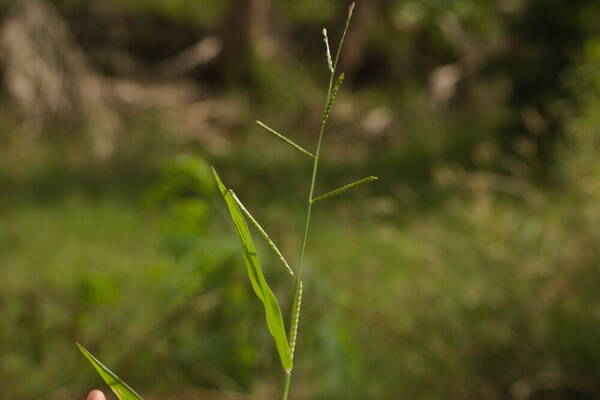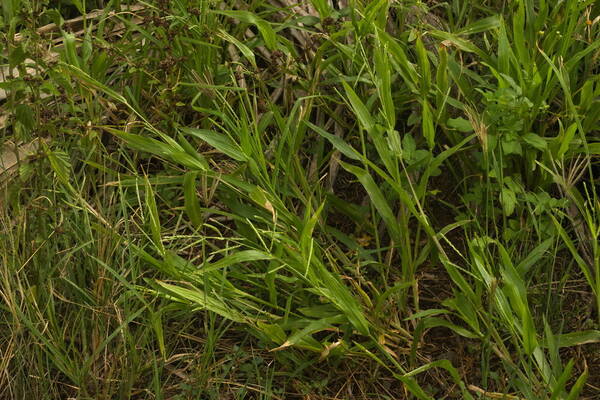Info
Subfamily: Panicoideae
Genus etymology: Urochloa = "tail grass" [Greek] refering to the small tail (mucro) of the upper lemma of some species
Species etymology: plantaginea = "resembling plantain" [Latin] refering to the broad leaves which resemble Plantago L.
Photosynthetic type: C4 (warm season)
Nativity: naturalized - intentional
First recorded in Hawaiʻi: 1940
Map


Inflorescence

Plant




Habit




Spikelets



Description
Plants annual. Culms 20-100 cm, decumbent, geniculate, branching and rooting at the lower nodes; nodes glabrous. Sheaths mostly glabrous, except the margins ciliate, with papillose-based hairs; ligules 0.5-1.5 mm; blades 3-21 cm long, 6-20 mm wide, glabrous, bases subcordate to cordate, clasping the stems, margins sometimes ciliate basally. Panicles 6-25 cm long, 2-7 cm wide, with 3-8 spikelike primary branches in 2 ranks; primary branches 2-11 cm, axes 1-1.5 mm wide, flat, margins scabrous; secondary branches absent; pedicels shorter than the spikelets, glabrous or scabrous. Spikelets (4)4.5-6 mm long, 1.9-2.2 mm wide, solitary, appressed to the branch axes, in 2 rows. Glumes separated by an internode of about 0.5 mm; lower glumes 1.5-2.5 mm, to 1/3 as long as the spikelets, broadly ovate, glabrous, 9-11-veined; upper glumes 3-4.2 mm, glabrous, 7(-9)-veined, without evident cross venation; lower florets sterile; lower lemmas 3-4.2 mm, glabrous, 5-veined; lower paleas present; upper lemmas 2.7-3.6 mm long, 1.5-2 mm wide, apices rounded; anthers 0.7-1 mm. Caryopses 2-2.5 mm. 2n = 36, 72.
(Description source: Barkworth, M.E., Capels, K.M., Long, S. & Piep, M.B. (eds.) 2003. Flora of North America, north of Mexico. Volume 25. Magnoliophyta: Commelinidae (in part): Poaceae, Part 2. Oxford University Press, New York. 783 pp http://floranorthamerica.org/Urochloa_plantaginea )